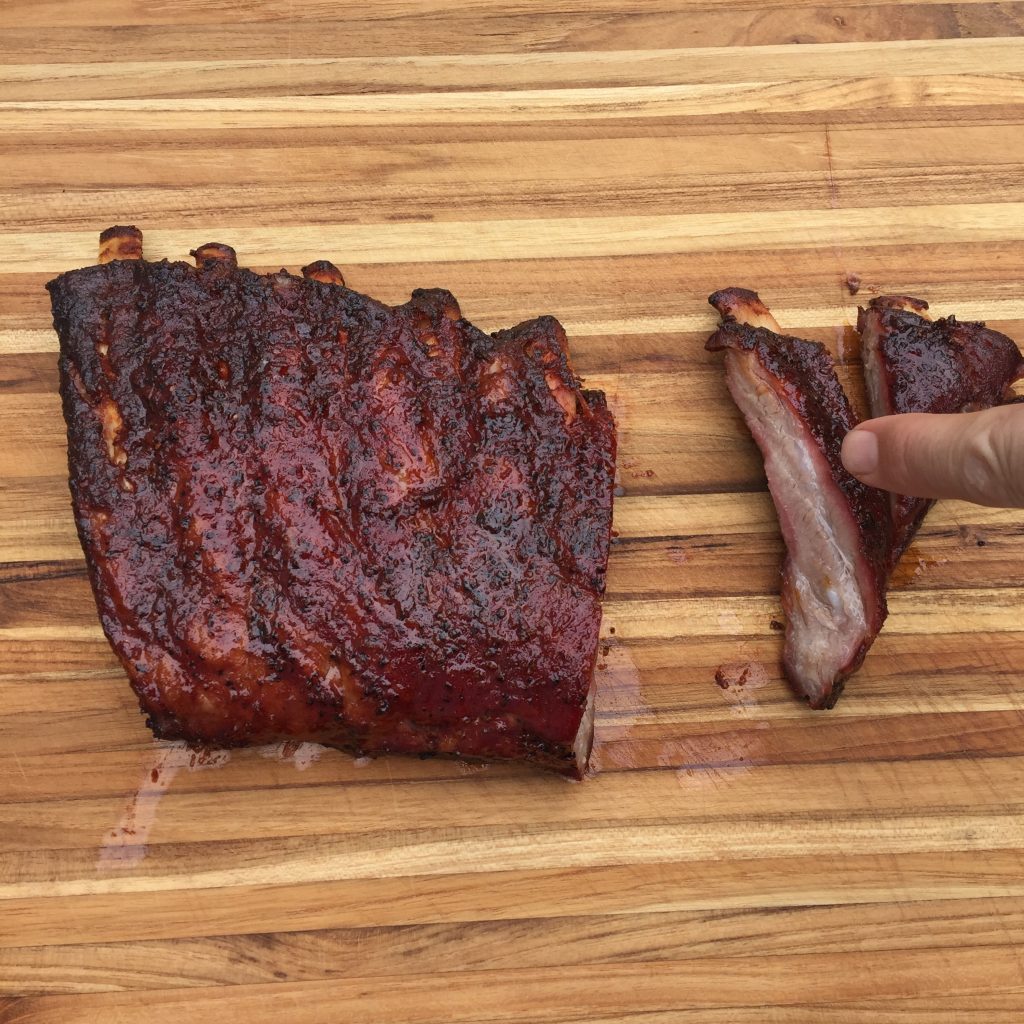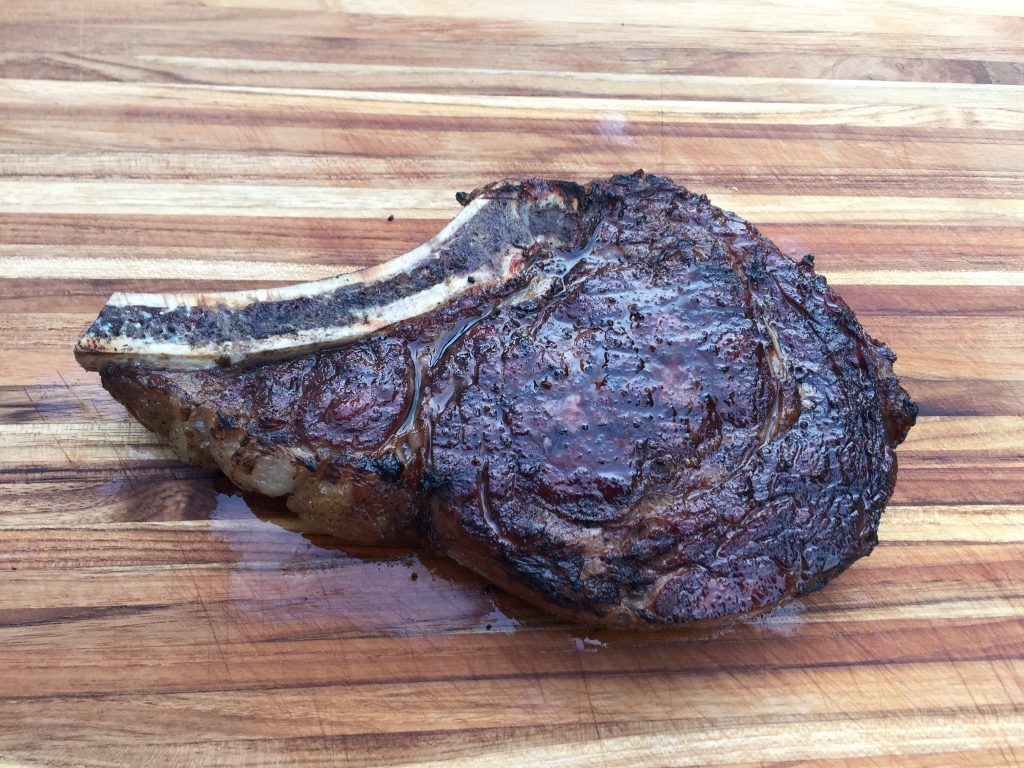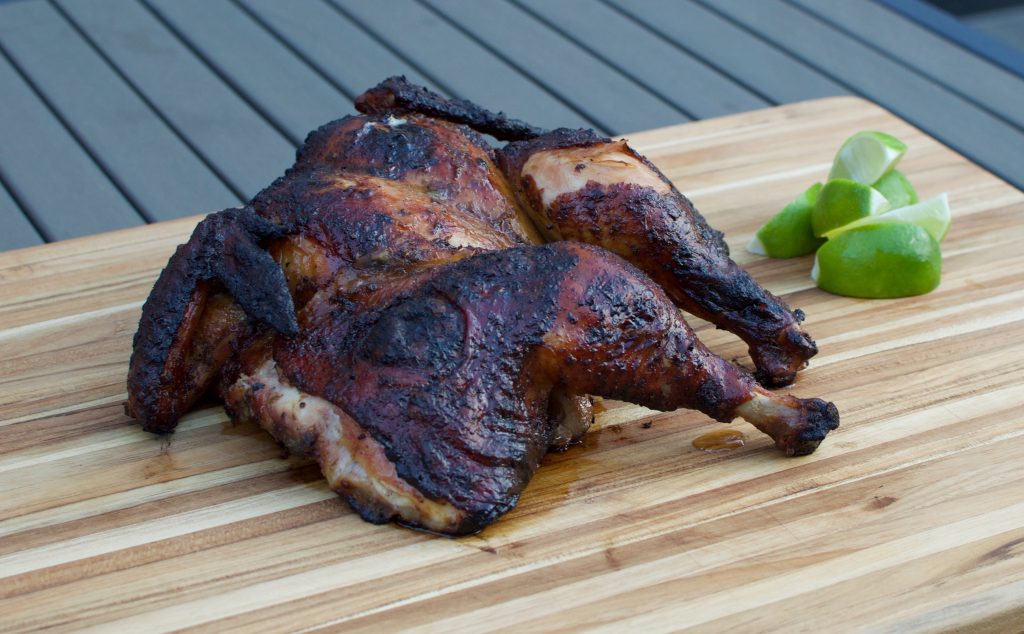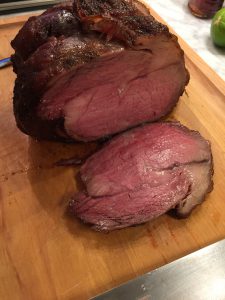
This is a recipe from the New York Times with some minor tweaks. I’ve made these several times and I think this is approaching perfection.
Total cooking time 7 hours plus overnight seasoning
Ingredients
2 Racks baby back ribs
Rub
4 Tablespoons Kosher Salt
4 Tablespoons Packed Light Brown Sugar
2 Tablespoons Ground black pepper
Glaze
1/4 cup gochujang
3/4 cup apple cider vinegar
1/4 cup packed light brown sugar
1/2 teaspoon ground black pepper
1/4 teaspoon ground chipotle pepper
1/8 teaspoon crushed red pepper flakes
1/2 teaspoon paprika
The day or evening before, remove silver skin from ribs and apply rub. Wrap in plastic and refrigerate overnight.
The next day, rinse ribs in cold water and pat dry. Return to fridge and allow to dry/cool for an hour or so. Putting in freezer for an hour right before cooking might increase smoke ring.
Prepare a fire for indirect cooking at around 250º. Add some hardwood for flavor (I use 5-6 chunks of cherry or apple). Allow temperature to stabilize and wait for the blue smoke.
Smoke ribs for 4 hours, maintaining 250º temperature.
Meanwhile, combine all ingredients for glaze.
After 4 hours, glaze ribs all over. Repeat every hour.
At 7 hours total cooking time, check for doneness (your preference, toothpick, bend, whatever). Let them cook without additional glaze if they need some more time. When they are done, take them off and glaze one last time.
Allow ribs to rest for 10 – 20 minutes before cutting and serving.


